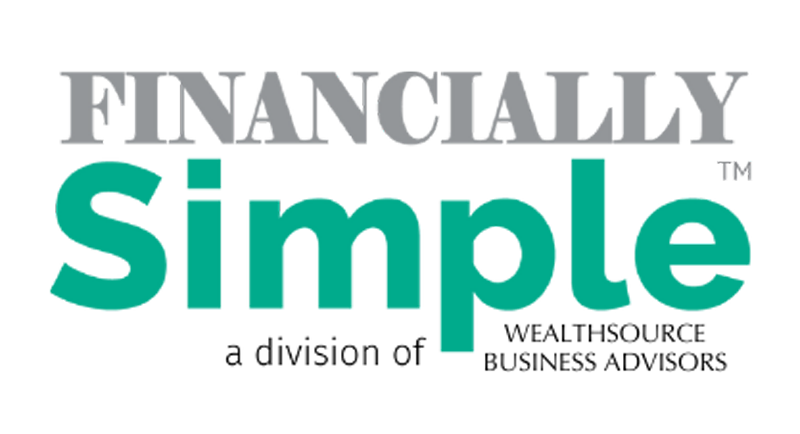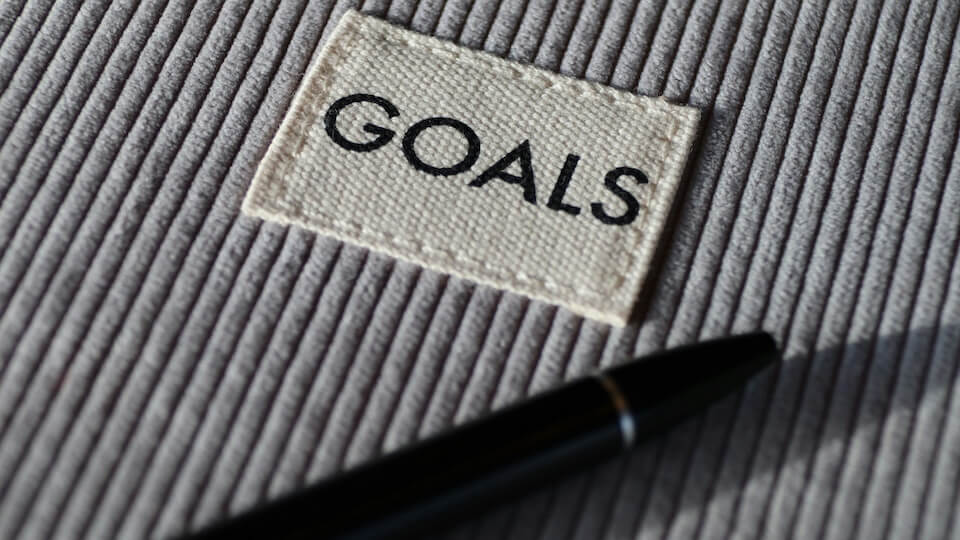
Why You Should Have a Financial Advisor Who is a Fiduciary
November 14, 2020
Normalizing Personal Income: A Business Owner’s Guide
November 17, 2020Calculating Your Business’ ROI

Over the past few weeks, I have really had it pressed upon my heart to address some of the key topics that cause business owners the most fear and anxiety. These are the areas that run back and forth through the business owner’s mind as they lie in bed at night. The good news is that most of these fears can be mitigated through knowledge. In today’s post, we are going to continue to discuss the wealth gap. More specifically, I want to dive into calculating your business’ ROI or return on investment and how it pertains to your wealth gap.
Follow Along With The Financially Simple Bizcast!
TIME INDEX:
- 01:33 – Calculating the ROI of Your Business
- 02:33 – The Basics of ROI
- 04:52 – The Simplest Method
- 06:18 – Case Example
- 10:31 – Intangible Qualities
- 13:47 – Goodwill
- 14:50 – Valuing Goodwill
- 17:30 – Another Approach
- 19:43 – Why Do All This?
- 23:57 – Summary
Business ROI 101: The Basics
In many areas, your ROI is automatically calculated. Your investment portfolio will often have a quarterly report that shows your year to date return on investment. Likewise, your cash accounts at the bank will receive statements that display your year to date ROI. Basically, the ROI is just a statement on the profitability of your investment. Although the ROI is a relatively simple concept, many business owners don’t truly understand how to calculate their return on investment.
Instead, they often refer to their revenues being up or down. Or, they will simply say, “Well, I made more money this year than last year.” But this isn’t the way to calculate your ROI. The absolute simplest way of calculating your business’ ROI is to divide the net profit by the total assets. For example, if your net profit was $100K and your total assets equaled $400K, then your ROI would be 25%.
A More Accurate Case Example
Admittedly, the last example was very simple and most likely, doesn’t represent many cases. With that in mind, let’s go a little bit further into the weeds. I understand that your business may be drastically different than the one in the scenario that I’m about to give, but this is a fairly typical example of our average clientele. In this example, let’s say that the client is a small business owner of an LLC and is taxed as a single member. This matters when calculating your business’ ROI, as the calculation changes slightly based on how your entity was set up.
Additionally, the owner of this business is not a W-2 employee. Instead, they are compensated through a draw or a distribution of the profits from the company. When looking at the balance sheet, you will see assets of $500,000. These assets are cash, accounts receivable, equipment, and supplies. In other words, your typical balance sheet. On the other hand, there is a $250,000 profit listed on the P&L statement. According to our simple calculation, you would divide $250,000 (net profit) by $500,000 (total assets) and get a 50% ROI. That’s pretty awesome, isn’t it? There’s just one problem. You need to look at your business as an investor would look at it.
What do I mean by that? Well, you know what you currently make. How much would you pay somebody to do the exact same job that you’re doing within your business? See what I’m getting at? Going back to our example, let’s say that this business owner is acting as the CEO of their company which is generating $250,000 in net profits. Would you pay them $250K to do the job that you’re doing? In this case, I would probably only pay a manager in this hypothetical company $150,000. This means the net profits go down to $100,000 and the business’ ROI shrinks to just 20%.

Intangible Qualities
The vast majority of clients that I work with are in the service industry. They provide their clients and customers with a type of service rather than a tangible widget. In these types of businesses, the majority of their value is not found in their inventories, equipment, or cash assets. Instead, most of their value is found in goodwill. Goodwill is an intangible asset that explains the difference between the company’s purchase price and its fair market value.
I like to look at it from the perspective of the collection and trading of baseball cards. You see, when I was a child, I used to go to the corner store and buy packs of baseball cards with my allowance. I would tear open the pack, chew on the world’s stalest chewing gum, and see which cards I had procured. There were times when the entire pack wasn’t worth the dollar I paid for it. But other times there would be a single card that was worth $0.50 or $0.75. Now, despite what Beckett’s Pricing Guide said a card was worth, there were plenty of times that I would trade a card of much greater value for one of lower value (and vice versa) in order to get the card that I needed to complete a set. Why would I do that?
The reason that I paid above market value for certain cards when trading with my friends, was that there was an intangible value that I couldn’t explain but I could see it. Oftentimes, there are intangible qualities in your business that will make it more valuable to somebody else.
What is the Value of Goodwill?
I want you to imagine that your company’s book value is $1MM. However, you keep receiving offers for $1.5MM. Those additional half-million dollars is based on goodwill value. But how do you grow the value of your goodwill? You need a great and diversified customer base, top-tier talent, brand recognition and trust, customer and supplier contracts, etc. There is a list of intangible assets that help drive the value of your company. But there are two ways of calculating ROI. In his newsletter, Jim Stauder does a great job of explaining the goodwill to asset ratio.
Stauder states:
“Let’s assume a seller has a machine shop with $2,500,000 in revenues and $500,000 of the seller’s discretionary earnings (SDE). In a business sale structured as an asset sale, according to the chart in Newsletter Issue #6 – How Small Businesses Are Valued Based on Seller’s Discretionary Earnings (SDE), a multiple of 4x would yield a business valuation of $2,000,000 for the machine shop. (This example assumes the seller is retaining all accounts receivable and cash as of closing and is responsible for paying off all liabilities at closing.) Now let’s assume the machine shop has equipment with a fair market value of $1,200,000 and an inventory of $150,000. The value of goodwill is the purchase price of the business ($2,000,000) less the value of the tangible assets ($1,350,000) which calculates to $650,000 as the value assigned to goodwill.”
With that understanding, I want to revisit our previous example. But first, let’s take a closer look at SDE. Seller’s Discretionary Earnings (SDE) is a calculation of the total financial benefit that a single full-time owner-operator would derive from a business on an annual basis. It is also referred to as Adjusted Cash Flow, Total Owner’s Benefit, Seller’s Discretionary Cash Flow, or Recast Earnings.
Measuring the Goodwill Value of Our Case Example
Now that we have covered the ins and outs of goodwill and SDE, let’s take another look at the case example from earlier. As I said before, our company is producing $1 MM in annual revenues with an SDE of $250,000. If someone were to step into that owner/managerial role, they could feasibly earn $250,000, because that is the current SDE. Using a 5x multiplier, the business is suddenly worth $1.25 MM.
From there, we will assume that we have an owner/operator lined up to buy the business. Therefore, we will divide $1,250,000 by $250,000 and reveal that we have a 20% ROI on our business. However, what if you’re preparing your business to sell to anybody, and not specifically to an owner/operator? Well, we’re going to calculate things a little bit differently. If you’re preparing to sell an enterprise-type of business (one where you, the business owner, are not at the epicenter of the business), an investor would look at the calculation like this: $1,250,000/$100,000 = 12.5%. Although it’s not a 20% ROI, 12.5% isn’t anything to turn your nose up at.
Here’s the thing, it’s rare to find a business with a 20% ROI. For that matter, I seldom come across one with a 12.5% ROI. At this point, you’re probably scratching your head and saying, “Uh, Justin, you lost me, brother!” That’s okay. I deal with this every single day, in my business. The entire point of this blog entry comes down to this one thing… You will never pin down your wealth gap without knowing the ROI of your business. If you aren’t calculating your business’ ROI, then your ability to truly know the progress you’re making towards your goals is going to be greatly diminished.
RELATED CONTENT: What Keeps Business Owners Up At Night?
Bringing it All Together
When I first mentioned the wealth gap, a few entries ago, I was specific in telling you NOT to use your business in your wealth gap calculation. You see, despite the fact that our businesses make up a significant portion of our wealth, as business owners, including it into your wealth gap calculations without knowing its true value or its ROI, would seriously skew the results. Thus, causing you to come up very short of your necessary goals.
Looking at our initial “river analogy,” we know where we are, where we want to be, and how long we have to get there. If we attempt to cross without the appropriate speed (ROI), we will never make it to the opposite riverbank in time. This is the very thing that causes business owners to be fearful and anxious, Friends, I don’t want that for any of you. That’s why I’m taking the time to explain how to avoid making those fears a reality.
Folks, life is hard. It really is. However, life is so good! Properly calculating your wealth gap to ensure that you reach your desired financial outcome within your specific timeframe is so important and, sometimes, frustrating. But it doesn’t need to be. With the right information, calculating your business’ ROI can be at least financially simple!
If you have questions about your business’ ROI, or if you’d like some help in properly calculating your wealth gap to ensure you reach your financial and retirement goals, contact us! Schedule a complimentary meeting with the experts at Financially Simple to see how we can help you toward your goals!



